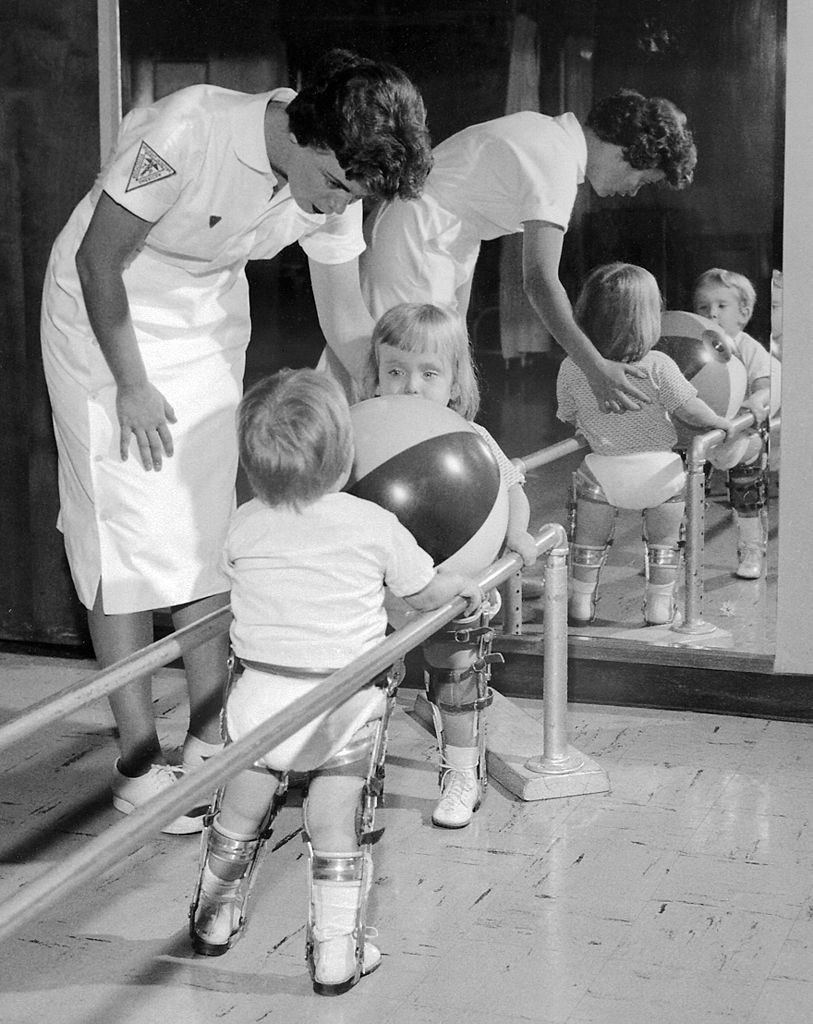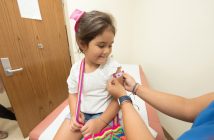China is (thankfully) not well known for anti-vaxxers, it has had its fair share of turmoil when it comes to vaccines. Before the Vaccine Administration Law was passed on December 1, 2019, so-called ‘underground clinics’ did a roaring trade distributing the latest foreign vaccines before they had been giving official approval in China, sometimes even upon the recommendation of public hospitals. In 2011 however during a government crackdown on the practice, one such clinic, Meihua Clinic received an “administrative punishment” for distributing the illegal vaccines and in 2017, their founder was prosecuted and sent to jail.
Although Meihua’s legal team claims that the children injected with the vaccine showed no complications, other companies did not fare so well. Back in 2018, Changchun Changsheng Life Sciences Ltd. was exposed for selling thousands of unregulated vaccines, which left children with permanent disabilities.
Do vaccine schedules apply to everyone the same?
The topic of mandatory vaccines sometimes comes up in parenting groups, with foreign passport holders wondering if their children have to get the same shots as Chinese children, particularly if they are planning to leave the country soon after the birth of their child. To get some clarity on the vaccines topic, we spoke to Dr. Wennie Balawis, a pediatrician at Oasis International Hospital here in Beijing.
Although different countries do have different regulations and mandatory vaccines, Dr. Balawis says that the same schedule applies to all children in China, regardless of nationality.
“Here in China, we follow one vaccine schedule for everyone as recommended by the Chinese CDC. The recommended primary vaccinations here are almost the same as in any other country. Actually, each city or province will have slightly different policies – but with the same vaccines – but the main framework of vaccination guidelines is still coming from the Chinese CDC.” She adds that the main difference is that the timing of administration (what age they are given), and if or how the vaccines are grouped together.
“Some countries like most European countries do not give certain vaccines like BCG because tuberculosis disease that this vaccine prevents is not endemic in these countries. On the other hand, other countries recommend certain vaccines that are not necessary in China, for example, yellow fever vaccine because this disease is not prevalent here.”
Ok, so we have to get vaccines in China. But which ones?
Dr. Balawis explains that in China, vaccines are divided into two categories: Category 1 vaccines are mandatory for all children, and free of charge as the cost of vaccinations is borne by the government. Many kindergartens will not accept kids without their shots. Category 2 vaccines are not obligatory, and the cost is borne by the parents of the child being vaccinated. However, Dr. Balawis stresses that they are highly recommended.
Category 1 Vaccines
| Acronym | Vaccine |
| BCG | Bacille-Calmette-Guerin vaccine for tuberculosis |
| Hepa B | Hepatitis B |
| HepA-L* | Hepatitis A – Live *This vaccine has largely been phased out in China and may not be included in your child’s schedule |
| HepA-I | Hepatitis A – Inactivated |
| PV (IPV, OPV) | Polio Vaccine ( Inactivated Polio Vaccine, Oral Polio Vaccine) |
| DTaP | Diphtheria, Tetanus, acellular Pertussis |
| MR | Measles-Rubella |
| MMR | Measles-Mumps-Rubella |
| JE-L | Japanese Encephalitis – Live |
| JE-I | Japanese Encephalitis – Inactivated |
| MPSV-A | Meningoccocal Polysaccharide Vaccine |
| MPSV-AC | Meningoccocal Polysaccharide Vaccine |
| DT | Diptheria, Tetanus |
We’ve also translated this handy chart from the National Immunization Program at the Chinese Center of Disease Control, which breaks down Category 1 Vaccines in the order of when your child must get them, as many vaccines require multiple follow-up ‘booster’s hots.
After Birth: Hepatitis B (1st); Bacille-Calmette-Guerin vaccine (BCG) for tuberculosis
One Month Old: Hepatitis B (2nd)
Two Months Old: Inactivated Polio Vaccine (IPV)
Three Months Old: Oral Polio Vaccine (OPV); Diphtheria, Tetanus, acellular Pertussis vaccine (DTaP) (1st)
Four Months Old: OPV (2nd), DTaP (2nd)
Five Months Old: DTaP (3rd)
Six Months Old: Hepatitis B (3rd), Meningococcal Polysaccharide Vaccine (MPSV-A) (1st)
Eight Months Old: Measles (1st), Japanese Encephalitis – Live (JE-L) vaccine (1st), JE-1 (1st and 2nd)
Nine Months Old: MPSV-AC (2nd)
Eighteen Months Old: DTP (4th), Measles-Mumps-Rubella (MMR) (1st), HepA-L (1st); HepA-I (1st)
Two Years Old: JE-L (2nd); JE-I (3rd); HepA-I (2st)
Three Years Old: MPSV-AC (3rd)
Four Years Old: OPV (3rd)
Six Years Old: DT (1st); JE-I (4th); MPSV-AC (2nd)

Thanks largely to vaccinations, polio cases worldwide have decreased by over 99% since 1988
Category 2 Vaccines
Category 2 vaccines include coverage of some rarer diseases that are not considered endemic in China, such as rabies, Cholera, and Human Papilloma Virus.
| Acronym | Vaccine |
| HiB | Haemophilus influenza type B |
| DTaP-IPV-HiB (Pentaxim) | Diphtheria, Tetanus, acellular Pertussis – Inactivated Polio Vaccine – Haemophilus influenza type B |
| DTaP-HiB (4-in-1) | Diphtheria, Tetanus, acellular Pertussis – Haemophilus influenza type B |
| PCV 13 | Pneumococcal Conjugate Vaccine 13 |
| PCV 23 | Pneumococcal Conjugate Vaccine 23 |
| Rotavirus Vaccine | Rotavirus Vaccine |
| Varicella | Varicella Vaccine (Chicken Pox Vaccine) |
| Flu Vaccine | Influenza Vaccine |
| EV 71 | Enterovirus 71 |
| Rabies Vaccine | Rabies Vaccine |
| Cholera Vaccine | Cholera Vaccine |
| HPV | Human Papilloma Vaccine |
Other than providing additional coverage for your children by giving your child Category 2 vaccines, Dr. Balawis says there are other advantages including the fact that more vaccines are grouped under single treatment, thereby reducing the number of visits to the doctor that a child must make.
She cites the Category 2 ‘Pentaxim’ (DTaP-IPV-HiB) vaccine as a good example, as in one go it covers children for multiple maladies. To get the same mandatory vaccines in Category 1, the child would have to go in for at least 3 separate shots.
As with everything relating to children’s health, parents are advised to discuss their options in detail with a trusted pediatrician.
KEEP READING: “So You Want to Become a Doctor?”: Facing the Reality of Medical School
Images: Aditya Romansa (via Unsplash), Wikimedia Commons





